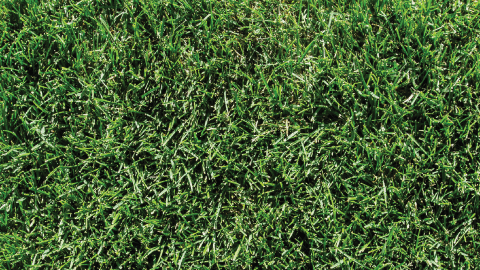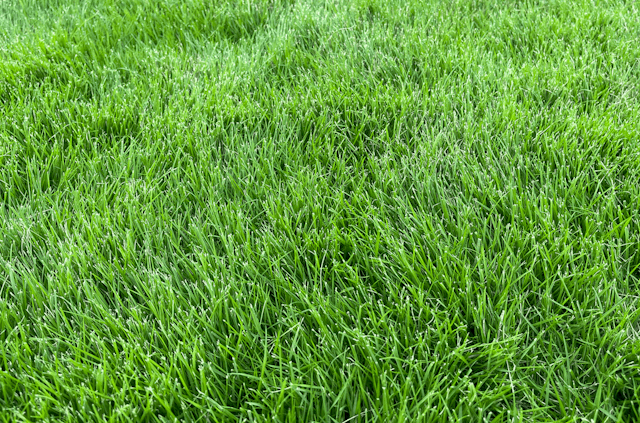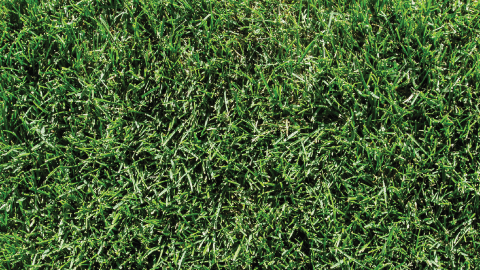Compare Sod Types
Kentucky Bluegrass vs. Zoysia Sod
Let's dive into a side-by-side comparison of these two grasses. We're looking at everything from cost and looks to how well they stand up to drought, shade, and foot traffic. Stick around to see which one comes out on top!


Price
Which costs more, Kentucky Bluegrass or Zoysia sod?
Between these two, Zoysia is typically on the pricier side with an average cost per square foot of $0.73. On a per pallet basis, which is usually how sod is sold, this comes out to roughly $362.50 per pallet.
Kentucky Bluegrass on the other hand, is a more moderately priced at $0.52 per square foot (on average). This comes out to around $262.50 per pallet.
Editor's note: It's important to remember that both of these are averages based on data from around the country so cost can vary depending on your location. Keep in mind this doesn't include other fees like delivery or installation.
See our sod calculator to get a comprehensive sod estimate. →
Sun & Shade
Which grass grows better in the shade?
Kentucky Bluegrass does best with 4 to 6 hours of sunlight, but some shade-tolerant varieties can withstand light shade without significant thinning.
On the other hand, Zoysia Grass is versatile, withstanding shaded areas quite well; it stays healthy with about 4 to 5 hours of sun but prefers a bit more light when possible.
Appearance
Which one looks better? You decide.
When choosing between sods like Kentucky Bluegrass (pictured lefttop) and Zoysia (pictured rightbottom), personal preference plays a significant role, but understanding the nuances of each type's appearance can guide your decision. Here's what to consider:


Kentucky Bluegrass comes in with a lush, blue-green color and fine texture, forming a dense turf that's not only a treat for the eyes but also kind to your feet.
Zoysia Grass is thick and lush, sporting a deep green color and finer blades that cushion your steps, making for a plush, inviting lawn to walk and play on.
Drought Tolerance
Which one needs more water?
Kentucky Bluegrass has moderate drought tolerance; it can struggle in extreme dryness but will go dormant and can recover with adequate watering.
On the other hand, Zoysia Grass is quite drought tolerant, able to stay green with less water and recover well when conditions improve.
Takeaway: If you're located in a somewhat dry and arid geographic region and are looking for a grass that can handle drought-like conditions, Zoysia is the better option between Kentucky Bluegrass and Zoysia.
Grow Zones
Cold or warm weather - which do they prefer?
Kentucky Bluegrass generally grows better in cool or moderate climates. The ideal temperature range for laying Kentucky Bluegrass sod is between 60°F and 75°F.
Zoysia is well-suited for growth in warm or moderate climates. When it comes to laying sod, the ideal range for Zoysia is between 70°F and 90°F. If you choose to lay outside of the ideal range, you can still have success, but it may take a longer time to esablish and require a bit more maintenance.
As you may have noticed, both Kentucky Bluegrass and Zoysia thrive under pretty similar climatic conditions!
Lawn Traffic Tolerance
Which sod handles heavy foot traffic better?
Kentucky Bluegrass is quite traffic-tolerant, resiliently springing back and self-repairing, making it great for homes that enjoy an active outdoor space.
Similarly, Zoysia Grass is a champion of foot traffic tolerance, withstanding heavy use and bouncing back well from wear, making it ideal for busy yards and public spaces.
Takeaway: If you're looking for a grass that can handle heavy foot traffic, Zoysia is the better option between Kentucky Bluegrass and Zoysia.
Establishment Rate
Which grass grows faster?
Kentucky Bluegrass takes its time to establish, but its ability to self-repair through underground stems called rhizomes makes it a lush, durable lawn option for cooler climates.
Zoysia grass, characterized by its fine texture and high drought tolerance, establishes slowly but creates a dense, wear-resistant turf ideal for warm, temperate areas.
Net, net - if you're looking for a grass that establishes quickly, Kentucky Bluegrass is the way to go.
Pest & Disease Resistance
Which handles pests better?
Kentucky Bluegrass can be prone to pests like billbugs and diseases like rust, requiring attentive maintenance to identify and treat issues early.
Zoysia Grass is well-regarded for its pest resistance, particularly to chinch bugs and grubs, but can occasionally suffer from diseases like brown patch in humid conditions.
TLDR - if you're looking for a grass that wards off pests and disease, Zoysia edges out the competition.
Which Is Best?
Which sod is better, Kentucky Bluegrass or Zoysia?
Alright it's time to count the scores up.
Most blogs or articles are going to give you a wishy washy "it's up to you" speil. That is definitely true. You'll need to choose based on your geographic conditions and what you like most looks-wise.
That being said, if we just compare the scores based on the following measures. Higher is better in this case.
- Average Cost: 7 for Kentucky Bluegrass, 4 for Zoysia
- Shade Tolerance: 4 for Kentucky Bluegrass, 6 for Zoysia
- Drought Tolerance: 5 for Kentucky Bluegrass, 8 for Zoysia
- Traffic Tolerance: 7 for Kentucky Bluegrass, 8 for Zoysia
- Establishment Rate: 5 for Kentucky Bluegrass, 4 for Zoysia
- Pest & Disease Resistance: 6 for Kentucky Bluegrass, 7 for Zoysia
Drumroll please...
All in all, Zoysia comes out on top with a score of 37/60 versus 34/60 for Kentucky Bluegrass.
Thanks for reading! If you have any feedback or corrections for us, please email our editor at editor@sodcalculator.com.
Frequently asked questions (FAQs)
Can't find the answer you're looking for? Reach out to us directly at team@sodcalculator.com
Which is better for dogs, Kentucky Bluegrass or Zoysia sod?
Both Kentucky Bluegrass and Zoysia are great options for dogs! They are both durable and can handle the wear and tear that comes with having a pet.
Will Kentucky Bluegrass overgrow Zoysia?
Neither Kentucky Bluegrass nor Zoysia are particularly aggressive growers. Zoysia is not likely to overtake Kentucky Bluegrass, and vice versa.
Can you mix Kentucky Bluegrass and Zoysia sod?
It's not recommended to mix Kentucky Bluegrass and Zoysia sod. Mixing sod types can lead to uneven appearance and issues with lawn health. It's best to choose Kentucky Bluegrass or Zoysia sod and stick with it.
Which costs more, Kentucky Bluegrass or Zoysia sod?
Neither Kentucky Bluegrass nor Zoysia are particularly expensive or cheap at between $275.00 - $375.00 per pallet. Zoysia and Kentucky Bluegrass both offer a balance between cost and characteristics.
Is Kentucky Bluegrass or Zoysia sod better for shade?
Neither Kentucky Bluegrass nor Zoysia are particularly tolerant of shade; however, they aren't at the bottom of the pack either. The heartiness of Zoysia and Kentucky Bluegrass will come down to how much sunlight your lawn gets.
What are the main differences between Kentucky Bluegrass and Zoysia?
The main differences between Kentucky Bluegrass and Zoysia are in their cost effectiveness, drought tolerance, and shade tolerance. Zoysia performs better in all these aspects.
More Kentucky Bluegrass Comparisons
- Kentucky Bluegrass vs. Bermuda Comparison →
- Kentucky Bluegrass vs. Buffalo Comparison →
- Kentucky Bluegrass vs. Tall Fescue Comparison →
- Kentucky Bluegrass vs. Perennial Ryegrass Comparison →
- Kentucky Bluegrass vs. St. Augustine Comparison →
- Kentucky Bluegrass vs. Centipede Comparison →
- Kentucky Bluegrass vs. Fine Fescue Comparison →
- Kentucky Bluegrass vs. Bahia Comparison →